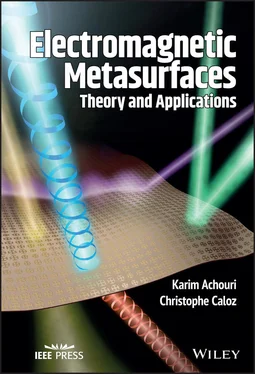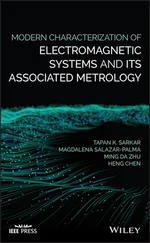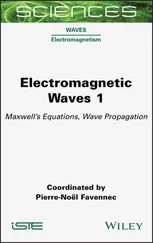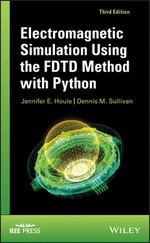Christophe Caloz - Electromagnetic Metasurfaces
Здесь есть возможность читать онлайн «Christophe Caloz - Electromagnetic Metasurfaces» — ознакомительный отрывок электронной книги совершенно бесплатно, а после прочтения отрывка купить полную версию. В некоторых случаях можно слушать аудио, скачать через торрент в формате fb2 и присутствует краткое содержание. Жанр: unrecognised, на английском языке. Описание произведения, (предисловие) а так же отзывы посетителей доступны на портале библиотеки ЛибКат.
- Название:Electromagnetic Metasurfaces
- Автор:
- Жанр:
- Год:неизвестен
- ISBN:нет данных
- Рейтинг книги:4 / 5. Голосов: 1
-
Избранное:Добавить в избранное
- Отзывы:
-
Ваша оценка:
Electromagnetic Metasurfaces: краткое содержание, описание и аннотация
Предлагаем к чтению аннотацию, описание, краткое содержание или предисловие (зависит от того, что написал сам автор книги «Electromagnetic Metasurfaces»). Если вы не нашли необходимую информацию о книге — напишите в комментариях, мы постараемся отыскать её.
, distinguished researchers and authors Karim Achouri and Christophe Caloz deliver an introduction to the fundamentals and applications of metasurfaces and an insightful analysis of recent and future developments in the field. The book describes the precursors and history of metasurfaces before continuing on to an exploration of the physical insights that can be gleaned from the material parameters of the metasurface.
You’ll learn how to compute the fields scattered by a metasurface with known material parameters being illuminated by an arbitrary incident field, as well as how to realize a practical metasurface and relate its material parameters to its physical structures. The authors provide examples to illustrate all the concepts discussed in the book to improve and simplify reader understanding.
Electromagnetic Metasurfaces Readers will also benefit from the inclusion of:
A thorough introduction to metamaterials, the concept of metasurfaces, and metasurface precursors An exploration of electromagnetic modeling and theory, including metasurfaces as zero-thickness sheets and bianisotropic susceptibility tensors A practical discussion of susceptibility synthesis, including four-parameters synthesis, more than four-parameters synthesis, and the addition of susceptibility components A concise treatment of scattered-field analysis, including approximate analytical methods, and finite-difference frequency-domain techniques Perfect for researchers in metamaterial sciences and engineers working with microwave, THz, and optical technologies,
will also earn a place in the libraries of graduate and undergraduate students in physics and electrical engineering.



 m/s and
m/s and  are the speed of light in a vacuum and the vacuum impedance, respectively, and
are the speed of light in a vacuum and the vacuum impedance, respectively, and  ,
,  ,
,  , and
, and  are the electric, magnetic, magnetic-to-electric, and electric-to-magnetic susceptibility tensors, respectively. Note that these susceptibilities are all unitless. Substituting ( 2.2) into ( 2.1) yields the bianisotropic constitutive relations
are the electric, magnetic, magnetic-to-electric, and electric-to-magnetic susceptibility tensors, respectively. Note that these susceptibilities are all unitless. Substituting ( 2.2) into ( 2.1) yields the bianisotropic constitutive relations

 is the unity dyadic tensor. Sometimes, these relations are also expressed in the more compact form
is the unity dyadic tensor. Sometimes, these relations are also expressed in the more compact form

 (F/m),
(F/m),  (H/m),
(H/m),  (s/m), and
(s/m), and  (s/m) are the permittivity, permeability, magnetic-to-electric, and electric-to-magnetic tensors, respectively.
(s/m) are the permittivity, permeability, magnetic-to-electric, and electric-to-magnetic tensors, respectively. , (ii) the time,
, (ii) the time,  , (iii) the frequency,
, (iii) the frequency,  (temporal dispersion), and (iv) the direction of wave propagation,
(temporal dispersion), and (iv) the direction of wave propagation,  (spatial dispersion), or a combination of these dependencies. This suggests a grand classification of metamaterials in terms of direct and Fourier-inverse space and time dependencies, as shown in Figure 2.1, where the 16 distinct types of dependencies correspond to a myriad of distinct bianisotropic media.
(spatial dispersion), or a combination of these dependencies. This suggests a grand classification of metamaterials in terms of direct and Fourier-inverse space and time dependencies, as shown in Figure 2.1, where the 16 distinct types of dependencies correspond to a myriad of distinct bianisotropic media. ) or spatially dispersive (
) or spatially dispersive (  ) metamaterials are more difficult to realize than spatially varying ones (
) metamaterials are more difficult to realize than spatially varying ones (  ), which only involve a spatial modulation in their geometry. Moreover, all the materials are de facto temporally dispersive, 2and particularly metamaterials, which strongly rely on resonant scattering particles to manipulate electromagnetic waves. Finally, some of these dependency combinations are also restricted by the uncertainty principle, as shown in [24]. Thus, metamaterial technology is often limited to a subset of the material types in Figure 2.1. Specifically, the most common types of metamaterials exhibit material parameters such as
), which only involve a spatial modulation in their geometry. Moreover, all the materials are de facto temporally dispersive, 2and particularly metamaterials, which strongly rely on resonant scattering particles to manipulate electromagnetic waves. Finally, some of these dependency combinations are also restricted by the uncertainty principle, as shown in [24]. Thus, metamaterial technology is often limited to a subset of the material types in Figure 2.1. Specifically, the most common types of metamaterials exhibit material parameters such as  (e.g. quarter/half-wave plates) and
(e.g. quarter/half-wave plates) and  (e.g. lenses and refractors) and, to a lesser extent,
(e.g. lenses and refractors) and, to a lesser extent,  (e.g. angularly asymmetric absorbers) and
(e.g. angularly asymmetric absorbers) and  (e.g. diffractionless refractors). It should be emphasized that this rich diversity of space–time variance and dispersion illustrated in Figure 2.1is restricted to linear metamaterials. As we will see in Section 4.3, the introduction of nonlinearity further increases the number of degrees of freedom for controlling electromagnetic waves.
(e.g. diffractionless refractors). It should be emphasized that this rich diversity of space–time variance and dispersion illustrated in Figure 2.1is restricted to linear metamaterials. As we will see in Section 4.3, the introduction of nonlinearity further increases the number of degrees of freedom for controlling electromagnetic waves. ,
,  , and
, and  will be referred to as a homoanisotropic medium, where “homo” indicates same excitation-to-response effects, i.e. electric-to-electric or magnetic-to-magnetic. A medium with
will be referred to as a homoanisotropic medium, where “homo” indicates same excitation-to-response effects, i.e. electric-to-electric or magnetic-to-magnetic. A medium with  ,
,  , and
, and  will be referred to as a heteroanisotropic medium, where “hetero” indicates different excitation-to-response effects, i.e. electric-to-magnetic or magnetic-to-electric. Finally, a medium with nonzero susceptibilities from all four tensors will be generally referred to as a bianisotropic medium.
will be referred to as a heteroanisotropic medium, where “hetero” indicates different excitation-to-response effects, i.e. electric-to-magnetic or magnetic-to-electric. Finally, a medium with nonzero susceptibilities from all four tensors will be generally referred to as a bianisotropic medium.










